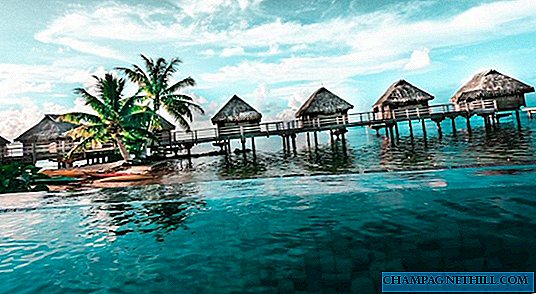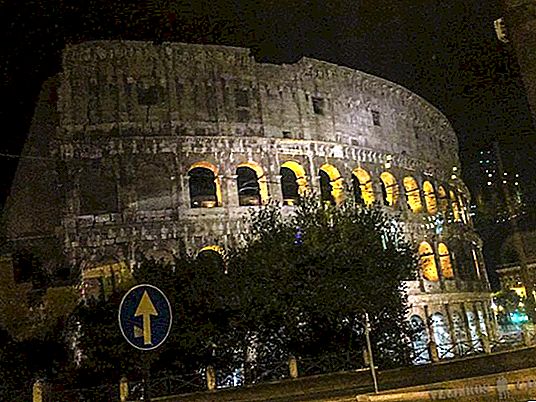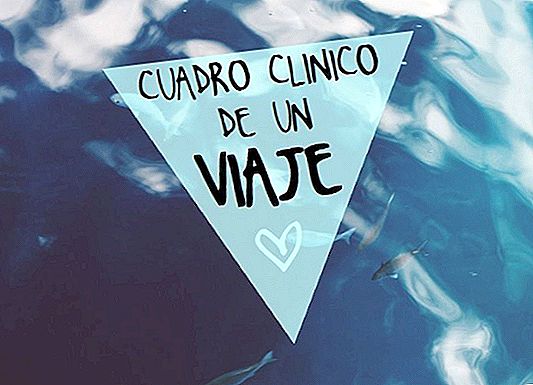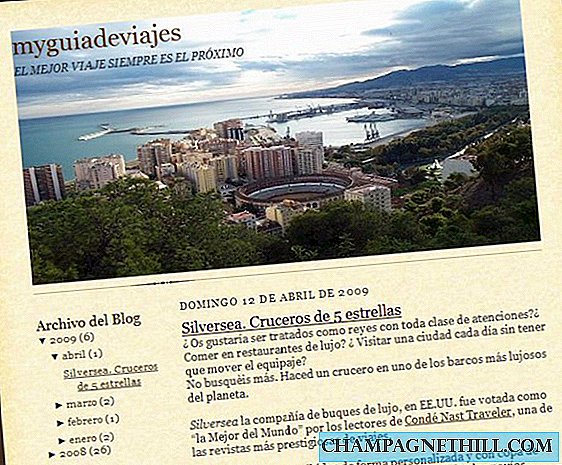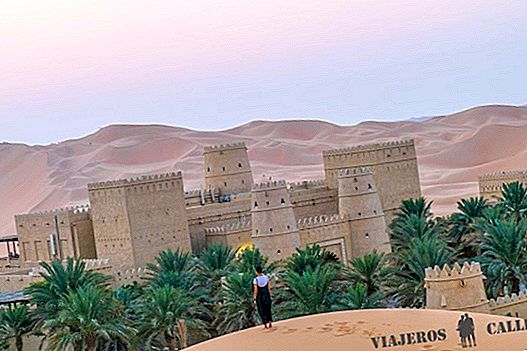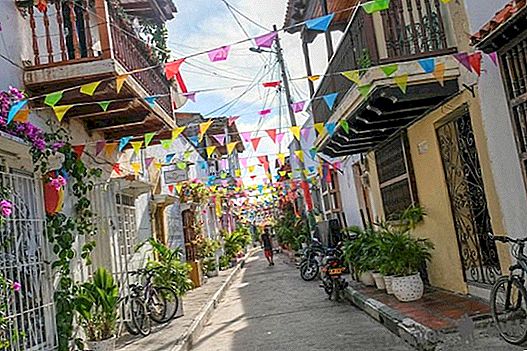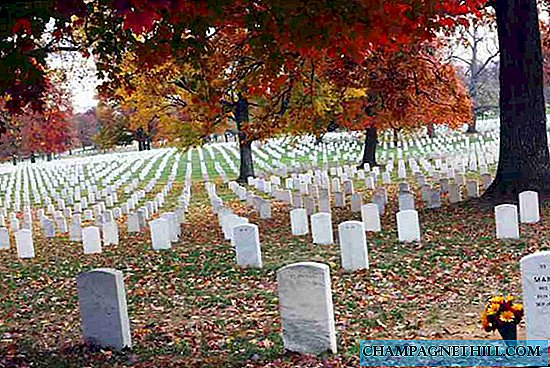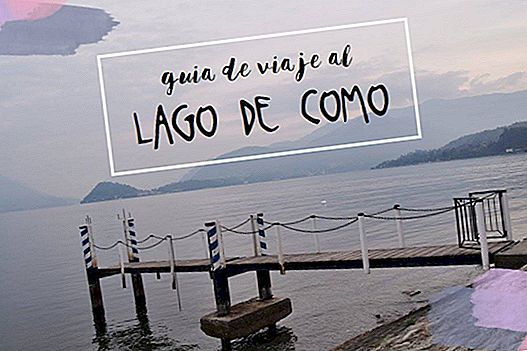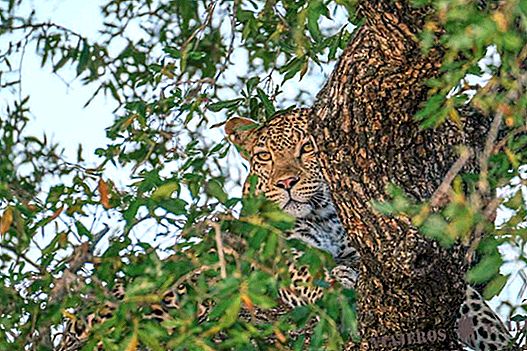Known for being one of the most important natural areas in the world, the Kruger National Park It has an area of almost 2 million hectares where 5000 white rhinos, 350 black rhinos, 4900 aquatic antelopes, 150 reddish antelopes, 37,000 buffalo, 28,000 zebras, 120 cheetahs, 2000 lions, 8,000 giraffes, 3000 hippos, 1000 leopards live together. 13,000 elephants, 9,000 ñues, 4,000 wild boars, 2,000 hyenas and 1,500 impalas, among many other species that make it one of the most impressive places in South Africa.
Among these are the Big 5 or 5 large, name with which the African elephant, the lion, the leopard, the rhino and the buffalo are known for being the 5 most difficult African animals to kill, which in the past, could endanger the life of the hunter.

Visit the Kruger National Park
We want to emphasize especially that the Kruger park It is home to 80% of the world's population of rhinos, an endangered species due to the constant threat of poachers who often enter the nearby border with Mozambique. Due to this great problem it is very important not to share location or photos of rhinos in social networks, so that hunters cannot locate them. In the same way you will see how in the information panels of the camps the rhino sightings are not marked for this same reason.
Kruger National Park Location
Located in the northeastern part of South Africa, 350 kilometers high and 60 kilometers wide, Kruger Park borders Mozambique in the east and from north to south, with Zimbabwe to the north and Swaziland to the south with which it practically borders.
As we have explained throughout the trip to South Africa in 25 days, although this is not essential, we would recommend visit the Kruger National Park at the end of your trip, since we would dare to say, it is the icing on the cake, and visiting it at the end of the trip will make the whole route a journey in which to go from less to more.
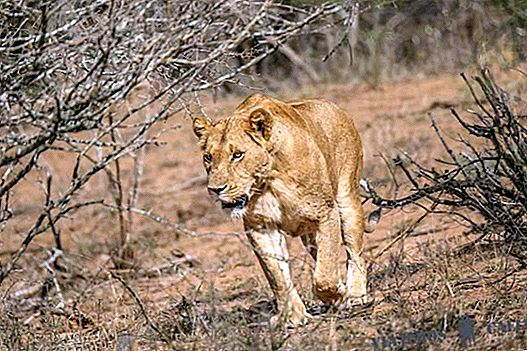
Lioness in the Kruger National Park
Best time to visit Kruger Park
Although we would dare to say that any time is good for visit the Kruger National Park, it is convenient to consider some factors to determine the best time to travel, according to your needs.
- Spring (September 1 to November 30): With a minimum temperature of 16 degrees and maximum of 30 degrees, this is one of the most recommended times to visit the Kruger National Park, since the temperatures are pleasant and have not started In the rainy season, the vegetation is usually low, making it much easier to observe animals.
- Summer (December 1 at the end of February): With a minimum temperature of 20 degrees and maximum of 32 degrees, summer is one of the busiest times in Kruger Park, mainly due to holidays and good weather. Taking this factor into account, it is highly recommended to book in advance, especially if you want to stay in the best known and most demanded camps.
At this time, much rainier, the vegetation is usually much higher, so animals are not usually seen as well. In addition to this, it should be borne in mind that mosquitoes and other insects are much more present at this time of year than in the winter months. - Autumn (March 1 to May 31): With a minimum temperature of 15 degrees and maximum of 29 degrees, autumn is another of the busiest times in the Kruger Park, with a change of landscapes, which begin to become more arid and therefore more suitable for sighting animals. Rains usually occur although they occur in the afternoon and evening.
- Winter (June 1 to August 31): With a minimum temperature of 9 degrees and maximum of 25, winter is usually the best time to see animals since the sheet is very dry and usually concentrated in rivers and ponds.
If you travel to the Kruger at this time, keep in mind that the temperature drops a lot at night and in the morning, so if you do a game drive in an open car, it is advisable to wear warm clothes.

Kruger National Park
How many days are needed to visit the Kruger National Park
This is one of the questions you ask us most about South Africa for free. Considering that most travelers go to the Kruger only once and try to make the most of the time, we believe that the time needed to visit the Kruger National Park It is a minimum of 4-5 days in which you can visit several of the most important areas of the Kruger, taking into account animal sightings.
If you have these days, without counting transfers from the airport, we would choose to distribute them as follows:
- Crocodile Bridge 1 night
- Lower Sabie 2 nights
- Satara 2 nights
If we had 4 days, we would remove one night in Satara, leaving 1 night in Crocodile Bridge and 2 nights in Lower Sabie.

Viewpoint in the Kruger Park
Kruger Schedules
Something very important to keep in mind are the Kruger National Park schedules, since these depend on whether or not you are staying inside and do not match the shops or restaurants.
Opening and closing of doors
- January, February, November and December: 05: 30h-18: 30h // If you stay in a camp inside the Kruger, you can start the safaris at 4: 30h in the morning.
- March and October: 05: 30h-18h
- April, August and September: 06h-18h
- May, June and July: 06h-17: 30h

Entrance to Crocodile Bridge
It is very important to keep in mind that you cannot move outside these hours through the park and you must be in the camps before the closing time. In case of not being, in addition to not complying with the safety regulations, you must pay a fine.
Kruger Store Hours
The shops in the Kruger National Park open at 7 in the morning and close half an hour after the park's doors close.
Kruger Park restaurant hours
The restaurants in the Kruger Park camps have a schedule from 7 in the morning to 21 at night. Keep in mind that there may be some variation, so it is best to ensure schedules at the time of check-in at the camp.
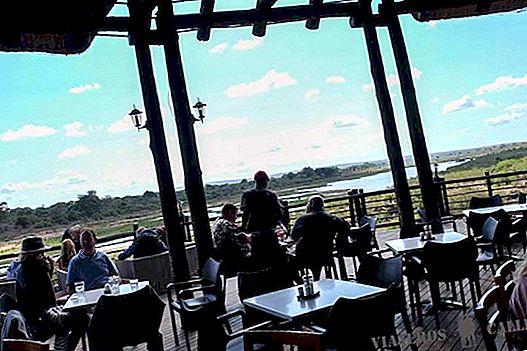
Lower Sabie Restaurant
Kruger Prices
The rate of the Kruger National Park, for foreign visitors, is R372 per person per day and R182 per child.
If you have the Wild Card, which we will talk about later, admission is free.
Wild card
With the Wild Card you will have unlimited entry over a year to more than 80 National Parks and Reserves in South Africa, depending on the type of group you choose, including the Kruger and Hlane National Park, one of the places to see in Swatziland.
Keep in mind that the Wild Card is valid from the date of purchase for 365 days and you can buy it for one person, couple or family (two adults and up to five under 18).
Something important is that if you are a foreigner, you must buy the International Wild Card, which is the most expensive of all options.
Like Kruger Park accommodations, you can buy the Wild Card through the official website.
Once you have purchased it, you will receive by email a receipt / voucher that you can show, either printed or on your phone, in the parks where the Wild Card is valid, so as not to pay the entrance fee.

Kruger National Park
Wild Card Price
Understanding that the purchase will be made as a foreigner, the Wild Card prices are:
International All Parks Cluster
Access to more than 80 parks and reserves in South Africa, which are included in the SANParks, Msinsi, EKZNWildlife, Cape Nature and Swazi Clusters parks.
Individual R2900
R4530 couples
R5420 families
Do I buy or not the Wild Card?
This is another of the questions you ask us most. The answer depends on the visits you are going to make during your trip, so it is best to check the prices of the parks you are going to visit on the South African National Parks page and compare it with the price of the Wild Card , depending on what you should buy according to your needs.
This was our case, taking into account the route we made on the trip to South Africa in 25 days.
Agulhas R162 National Park
Garden Route (Tsitsikamma, Knysna) R218 + R130
Kruger National Park R372 x day (9 days R3348)
Boulders R76
Cape of Good Hope R147
Hlane R50
R4131 per person
Wild Card for a couple = R3830
Keeping this in mind, by buying the Wild Card for a couple, we have saved R4432, so it has been very important.

Kruger National Park
Kruger Park Rules
- Security is the most important thing in the Kruger National Park, so it is important to know that the entrance is under your responsibility.
- Firearms must be declared before entering the park.
- We must comply with the schedules we discussed above. In case of not fulfilling them, you will have to pay a fine.
- The maximum speed on paved roads is 50km / h and on unpaved roads 40km / h. Keep that in mind since in addition to your safety, animal safety is at stake.
- It is strictly forbidden to drive on undesignated roads. These are duly marked.
- You can never, under any circumstances, get out of the car in areas where it is not allowed.
- If you are staying in a camp, you must go after 2pm to check in and leave the accommodation at 9am. Keep in mind that if you arrive earlier, you can do all the paperwork, to advance time and return at 2pm to collect only the keys.
- Although we always say that you have to consult a doctor before traveling, in this case we want to highlight in addition to that, that the Kruger is a malaria zone, so it is doubly important to go to the doctor before traveling to the Kruger.
- Feeding the animals is strictly prohibited. This is something to take into account, since the animals in which any strange behavior is observed, will be sacrificed since they can represent a safety problem.
- It is strictly forbidden to smoke or make fire.
- You cannot enter with pets.
- In addition to all of the above, we want to highlight the importance of being responsible tourists in the Kruger, in all aspects. Before doing something, think about where you are and if it is appropriate. Respect for nature and for the place where we are guests, should be our maxim in travel.

Distances in the Kruger

Lions in the Kruger National Park
What things should I take to the Kruger
Although this list is totally subjective and depends a lot on each person and their needs, after our experience, we want to leave you a selection of things that are very necessary for us in Kruger Park.
- Mosquito repellent (medication for malaria)
- Sun cream, hat, sunglasses. Even if you are in the car most of the time, keep in mind that you will be long standing enjoying scenes with animals in which it is not convenient to have the car engine running.
- Photo camera and own objective for nature.
- Binoculars.
- Map and GPS offline.
- Emergency telephones aimed to have them on hand if necessary.
- Lantern. In some camps the light is usually gone.
- Book "The map". In any of the stores of the Kruger you will find this book that includes in addition to many recommendations to visit the Kruger National Park, very detailed maps of all the areas of the park in addition to a selection of several pages with images of the animals that you can find in the park and that you can go crossing out.
The price of the book is R90.


Kruger Book
What areas to visit the Kruger?
Something important to keep in mind when deciding visit the kruger They are the different areas in which this, we can say, are divided. In this case we will focus on those located in the south-central area of the park, which are the ones with the highest concentration of animals and therefore, are the most visited by travelers.
First of all, we recommend you take a look at a map of the Kruger National Park to familiarize yourself with the locations of the areas and camps and thus be able to get an idea of the route you can take, depending on the days you are going to be in the park .
Based on the experience of our trip to South Africa in 25 days, in which we spent 9 full days in the Kruger, we leave you what have been for us the best areas to spot animals and stay.
Keep in mind that animals are not always in the same place, although some are usually territorial. That is why we want to emphasize that in the Kruger National Park, the luck factor is very important, in addition to the patience and knowledge of some details of the nature of the place. It is important to be aware that the Kruger is unpredictable and the animals move at will. You will see many animals, but these are probably giraffes, zebras, impalas, wildebeest, elephants ... etc, the most sought after, such as lions, leopards, cheetahs or rhinos, are much harder to see and sometimes you will spend days without seeing them.

Kruger National Park Map
Crocodile bridge
Located in the southern part of the Kruger National Park, it is the perfect gateway if you come from Saint Lucia or Suatziland.
Here there is a great concentration of animals due to the proximity of the Crocodrile River. Despite being a gateway, we recommend staying here one or two nights, depending on the days you have.
Keep in mind that later we will talk about the type of camps available in each area.
This area, known as the "Southern Circle" is famous for its large concentration of lions, relatively easy to see, as well as being home to the largest percentage of the total population of rhinos in the Kruger National Park.

Leopard in Crocodile Bridge
More practical information to prepare your trip to South Africa
- 10 essential places to see in South Africa
- The best tips for traveling to South Africa
Lower sabie
This area, north of Crocodile Bridge that stands out for being the place through which the Sabie River passes, is another of the areas of the Kruger most recommended to see animals, among which lions, hippos, elephants and leopards stand out. Together with Crocodile Bridge it was the most special scenes we saw.
Depending on the days you have, we recommend spending one or two nights in this area.
In our experience this is the perfect place to combine safaris with tranquility, since both in the safaris and in the camp you will have the possibility to enjoy an endless procession of animals that come to drink the Sabie river.

Elephant and giraffes in Lower Sabie

Cheetah with young in Lower Sabie
Skukuza
This is one of the busiest areas of the Kruger National Park, since it is in this camp where most organized groups are housed. Although the theory says that despite being very busy, there is a lot of concentration of animals, we did not have much luck in this area, so we would discard it to stay and at the most, we would do some car ride along the general road.

Hyena in Skukuza
Satara
Known for being a land of felines, for us this area of the Kruger National Park was not the most productive, although we do recommend spending one or two nights depending on the availability of the camp and the days of your trip. Within the area covered, it is relatively easy to observe animals as it is a very open area of vegetation, which allows a wide visibility.

Elephants and facocero in Satara
Olifants
This area is famous for being the location of Olifants Camp, considered as the camp with the best location and views of the Kruger. Although there are many animals, including elephants, lions, hippos and crocodiles, we had several incredible scenes, now we would dedicate only one night to this camp, if possible in a bungalow with views, just as we did.
Another option is to only come for a drink or eat at the restaurant, which has incredible views.

Leopard breeding in Olifants
In the next post, dedicated to the Safaris in the Kruger, we will analyze each of the areas, according to our experience and highlight those that have been for us the most productive roads in terms of sightings and animal scenes.
Distances in the Kruger
Something very important to keep in mind when you go on a safari in the Kruger National Park are the distances between camps and between areas of interest. Taking into account that the maximum speed on paved road is 50 km / h and on unpaved road 40km / h it is advisable to prepare a route before leaving, to avoid any surprise.
In addition to the distances you must have the time you will spend standing watching animals, taking photos or simply admiring the landscape, in addition to the fact that if you take a secondary route, the time is extended.
As we mentioned earlier in the book of the Kruger, that you can buy in any of the camp stores there are very detailed maps in which to see the distances clearly in addition to the numbering of the roads and identification of camps, shops, viewpoints ... etc and any type of service or prominent place in the park.
You can check the distances between Kruger camps here.
Tips for visiting Kruger National Park
- In the southern part of the park it usually rains more but there is also greater concentration of animals, so we believe that it is the most suitable area to squeeze your stay in Kruger Park to the fullest.
- The time between camps is usually 1 hour, driving at 50 km / h which is the maximum speed on paved roads. Keep in mind that this average is not counting the stops to see animals, so if we take this into account the time between camps would increase to approximately 2-3 hours.
- The best thing to enjoy to the fullest is not to cover great distances and be patient. Do not run.
- Although we will talk more extensively in the next post about safari in the Kruger, it is important to keep in mind that both sunrise and sunset are ideal times to spot animals as well as areas where there is water and are usually in the There are more animals.
- In all camps you can book guided game drives. It is advisable to do it in advance, since depending on the camp and the time, they usually run out.
- Before leaving, calculate the time and distances to avoid being outside the allowed time at the camp.
- If you only have 2-3 days to visit the Kruger National Park, we recommend focusing on the Crocodile Bridge, Lower Sabie and Skukuza areas.

Leopard in the Kruger National Park

Elephants in the Kruger
Accommodation in the Kruger
Undoubtedly, the issue of accommodation in the Kruger National Park is one of the most delicate aspects, since it is largely part of the trip to the Kruger in addition to the success of the sightings, since depending on the location in which be, you can see more or less animals.
In this case we will always rely on accommodation or camps within the Kruger, avoiding private lodges, where you can also stay, but according to our experience, for the type of trip we have made, they would not have compensated us.
In addition, we have to say that both the location and facilities, services and attention of the camps is excellent, so in this case, we believe that not worth it opt for accommodation in private reserve.
With this in mind, we leave you a list of the camps in which we have stayed, with their characteristics and our opinion according to experience.
You can check all the details of the camps such as location, maps, availability, types of accommodation or services on the official website of South African National Parks.
Crocodile Bridge Camp
On the Crocodile River, this is the most suitable camp to stay in if you come from the southern part of South Africa. Despite not having a restaurant, only a small cafeteria, it is becoming one of the most popular because of its location and the tranquility it offers by not having many accommodation places.

Bungalow in Cocodrile Bridge
Facilities available at Crocodile Bridge:
- Reception
- Public phone
- mailbox
- Small shop with food products and gift items.
- Keep in mind that there is no ATM.
- Laundry
- Fuel station
- Common kitchens
- Common bathrooms
- Basic First Aid Assistance
- Picnic area for day visitors
- In this area there is coverage with VODACOM

Crocodile Bridge Camp
Our recommendation for accommodation in Crocodile Bridge are bungalows BD3 (R1389), with bathroom and private kitchen. In the case of Crocodile Bridge there are not many more bungalow options, since it is a small camp. If you are lucky, someone with a view of the river will touch you, which is wonderful.
Lower Sabie Camp
Located on the Lower Sabie River, this is one of the most beautiful camps in the Kruger National Park as well as being a perfect option to combine safaris with rest, being able to enjoy incredible and unique views from some of the accommodations and the restaurant.
LOWER SABIE PHOTO
Facilities available in Lower Sabie:
- Reception
- Public phone
- mailbox
- restaurant
- Coffee shop
- Store
- Keep in mind that there are no ATMs in Lower Sabie.
- Laundry
- Fuel station
- Common kitchens
- Common bathrooms
- Swimming pool
- Basic First Aid Assistance
- Separate picnic area for day visitors who are not staying at the camp.
- In this area there is coverage with VODACOM

Lower Sabie Camp

Bungalow in Lower Sabie
Our recommendation for accommodation in Lower Sabie are the BD2U bungalows (R1691) with 2 beds, private bathroom and kitchen and incredible views of the river. Another of the recommended options are the BD2 bungalows with the same characteristics as the previous ones, but without river views.
Skukuza Camp
Located on the Sabie River, Skukuza is known for being the largest camp in the Kruger National Park, with capacity for more than 1000 people, in addition to having the largest souvenir and food shop in the park. Despite being very crowded, it is an area where there are many possibilities to see animals.
For us it was the least attractive camp due to the massive crowding, so if we return to the Kruger, we would not stay here again.

Bungalow in Skukuza
Facilities available in Skukuza:
- Reception
- Public phone
- Post office (if you have to send postcards it is the best office since they have daily collection).
- Bank
- Car rental
- 2 restaurants
- Store (the largest in the park)
- Laundry
- Fuel station
- Common Kitchens
- Common bathrooms
- Workshop service for the car
- Basic First Aid Assistance
- Doctor
- Auditorium and conference facilities
- Picnic area with pool for 1-day visitors (4 kilometers from the camp)
- 2 guest pools
- Car wash service
- In this area there is coverage with VODACOM

Skukuza Camp
Our recommendation for accommodation in Skukuza are the bungalows LR2W (R1998) with 2 beds, bathroom and private kitchen and incredible views of the river. Another of the recommended options are the BD2 bungalows with the same characteristics as the previous ones, but without river views.
Although it is not a camp that we like, if it falls within your budget, the bungalows overlooking the river are highly recommended.
Satara Camp
Known to many for being "land of felines" and one of the best places in the Kruger National Park where you can see the "Big Five", Satara has a location on a very clear sheet, making the sighting of animals relatively easy, besides having one of the most beautiful sunsets of the Kruger.
Facilities available in Satara:
- Reception
- Public phone
- mailbox
- restaurant
- Store
- ATM available in the restaurant
- Laundry
- Fuel station
- Common kitchen
- Common bathroom
- Pool with playground.
- Basic First Aid Assistance
- Picnic area for day visitors
- In this area there is coverage with VODACOM

Satara Map
Our recommendation for accommodation in Satara are the bungalows BD2 (R1495) with 2 beds, bathroom and private kitchen.

Bungalow in Satara
Olifants Camp
Located on the top of a hill, Olifants enjoys what they say, it is the best location of the Kruger National Park, in which the protagonist is the Olifants River that can be seen from the restaurant and some of its bungalows.
In addition to the safaris in this camp you can do a bike trail and an excursion to observe stars, which is a unique experience, since the Kruger is one of the places where you can enjoy one of the most spectacular skies in the world.

Olifants Bungalow
Facilities available at Olifants Camp:
- Reception
- Public phone
- mailbox
- restaurant
- Conference facilities
- Coffee shop
- Store
- There are no ATMs
- Laundry
- Fuel station
- Common kitchens
- Common bathrooms
- Basic First Aid Assistance
- Picnic area for day visitors, with the possibility of renting braai (barbecue)
- In this area there is NO coverage with VODACOM

Olifants Map
Our recommendation for accommodation in Olifants are the BD2V bungalows (R1629) with 2 beds, private bathroom and kitchen and incredible views of the river, in addition to having the perimeter right next to it.
In addition to these we discussed, there are several more, in other locations, which may be more or less interesting depending on the type of route you want to do. If it is your first trip to the Kruger National Park, we recommend you focus on these as they are the best known, the ones with the best access and where there is the greatest concentration of animals.
All prices shown may vary depending on the time you are staying or the offers available.
Type of accommodation in the Kruger Park
Although before, along with the map of the different camps, we indicated what our recommendation was about the type of accommodation, in this section we want to make a brief review of the different options that exist, depending on your needs or budget.
Keep in mind that in each of the camps the options vary, in many cases having the possibility to choose between 10-12 options depending on the location of the bungalow, the number of beds, whether or not you have a kitchen, private bathroom ... etc. With this in mind, we will leave only a general selection of the most common, so you can get an idea of the options that exist.
We recommend you look at the availability page in each of the camps where you can also see the characteristics of each of the accommodations available in each camp.
Bungalow
For us this is the most appropriate option to stay in the Kruger National Park, since depending on the option you choose, there are some that have more or less services, according to which the price also varies.
All have private bathrooms (most with showers, but some with bathrooms) and all have air conditioning. In some cases the bungalows have a kitchen, private, with everything you need to cook, including a fridge and kettle, while others have common kitchens.
In addition all have braai (barbecue), you can buy everything you need in stores to use it, including meat and private outdoor terrace.
Like the previous option with available services, prices vary depending on whether they are located in the perimeter, where animals can be seen at night, if they have views of the river ... etc.
At the time of booking you must choose the one that best suits your needs or preferences since each of them has a different name in the list of available accommodation in the camp.
All have parking next to the accommodation. You will see that the kitchens are exterior so the refrigerator, like the drawers or cabinets are protected with bars to prevent the monkeys from accessing. In case the refrigerator is not protected, you will find it inside the bungalow.
The price for two people is usually between R1500 those without views and R1800 with views.

Bungalows

Bungalow kitchen
Huts
These traditional accommodations have bathrooms and communal kitchen. All units have a refrigerator and air conditioning, but do not have kitchen utensils, crockery or cutlery.
The price for two people is usually between R700 and R800.
It is another of the most recommended accommodations in which to spend the night at visit the Kruger National Park.

Community kitchen
Safari Tents
This accommodation option is canvas tents furnished with 2 beds, some of which are wheelchair accessible. All are fully equipped, with 2 single beds, fridge, ceiling fan and a small terrace. Depending on the camp there are some that overlook the river or are next to the perimeter.
The bathroom and kitchen are communal. The price for two people is usually R1500.

Safari Tent
Family bungalows
These bungalows have several rooms and bathrooms and are fully equipped. Depending on the camp they have a location with views or not and all have a terrace and barbecue.
The price is usually R2500 the house completes a very tight price if there are several who visit the Kruger National Park.
Camping
This area has more or less places, depending on the camp and tents or campervan can be installed. All places have access to common bathrooms and kitchens.
The price is usually about R300-R400 for two people depending on the camp and the dates.

Camping Area
Taking into account these data, if you have a tight budget, the bungalows without extras such as views or proximity to the perimeter, we believe they are a perfect option, since they have all the comforts such as private bathroom and kitchen, at very affordable prices.
In case of having a smaller budget, the Huts or the Tented Camp, from what we saw, are also a perfect option with the only one inconvenient They do not have a private bathroom or kitchen, although you can use the common facilities.
How to book hotels in the Kruger
Although it is much easier than it may seem, we leave you the steps to follow to reserve the accommodation in the Kruger National Park.
- Lo primero y más importante es acceder a la página de disponibilidad de South African National Parks y una vez allí seleccionar el campamento en el que quieras reservar.
- Una vez lo hayas seleccionado podrás ver las fechas y disponibilidad según el tipo de alojamiento además de detalles como el precio. Pinchando sobre el alojamiento puedes ver las características del mismo.
- Otra opción es mirar el tipo de alojamiento disponible según la fecha, en la que en un calendario podrás ver las opciones que hay.
- Una vez lo hayas seleccionado podrás pinchar sobre la opción "Book an Pay" en la que después de aceptar las condiciones, deberás registrarte poniendo tus datos y hacer el pago.
- Lo mejor es ir añadiendo todos los alojamientos a la misma reserva para poder así hacer un único pago y tener una única confirmación, que recibirás por email una vez hecho el pago.
- Una vez tengas la confirmación podrás ir haciendo modificaciones sin coste (únicamente el extra de la modificación del alojamiento) en tu reserva, de la que irás recibiendo confirmaciones cada vez que modifiques algún alojamiento.

Alojamiento Kruger
En la foto puedes ver el ejemplo de los alojamientos que reservamos inicialmente y que cambiamos a medida que se acercaban las fechas por unos mejores que en el momento de la reserva no estaban disponibles.
Consejos para hacer la reserva de alojamiento en el Kruger
- Teniendo en cuenta que el Parque Nacional Kruger es uno de los lugares más visitados de Sudáfrica, lo mejor, cuando sepas las fechas en las que estarás en el parque es reservar los alojamientos en los campamentos en los que quieras alojarte.
- En muchas ocasiones, verás que no están disponibles los que te gustarían o encajarían con lo que necesitas. No te preocupes, reserva los que hayan disponibles y más se ajusten a lo que quieres y después a medida que pasen los días, ves mirando la página a ver si están los que quieres, para poder hacer el cambio. Suele ser muy habitual que la disponibilidad vaya cambiando a medida que avanzan los meses y días.
- Recuerda llevar una copia de la confirmación de la reserva, que te llegará por email impresa además de una copia en tu teléfono (suele bastar con esta).
- Una vez en el Kruger, deberás ir entregando esta confirmación en cada uno de los campamentos en los que te alojes.
- Aunque depende de tu presupuesto, siempre que sea posible, alojarte en los bungalows con vistas es una auténtica maravilla, ya que suelen ser mucho más tranquilos y la posibilidad de ver animales está prácticamente asegurada.
- De igual forma también tenemos que decir que al menos nosotros no llegamos a aprovecharlos al máximo, ya que estábamos prácticamente todo el día en el coche haciendo safaris. Si tienes esto en cuenta y crees que vas a pasar la mayor parte del tiempo en el coche o no eres de estar mucho tiempo sentado disfrutando de las vistas, puede ser mucho más adecuado que optes por los bungalows standart y así ahorrar un buen pico.
- Algo importante es tener en cuenta que para hacer el check in debes esperar a las 14h, aunque puedes realizar los trámites antes y esperar a las 14h para recoger las llaves. Para hacer el check out, si la recepción está cerrada, que es lo más habitual ya que la mayoría de viajeros salimos a primera hora, únicamente debes dejar las llaves en una especie de buzón que hay a la salida de los campamentos y en el que se indica "keys".

Accommodation in the Kruger
Servicios disponibles en el Parque Nacional Kruger
Todos los servicios disponibles en el Parque Nacional Kruger están dentro de los campamentos y dependiendo de cada uno de ellos, puedes encontrar unos u otros. Te dejamos una selección de los que son para nosotros los más importantes o destacables:
- Gasolinera. El precio es prácticamente el mismo que puedes encontrar en todo el país. En 2018 1 litro tenía un precio de R16.
- Tiendas. Dependiendo del campamento son más o menos grandes pero en todas encontrarás alimentos de primera necesidad y gran variedad de snacks, bebidas, helados, carne, sandwich… etc
Además de esto, en todas hay secciones de souvenirs y librería, más o menos pequeña, dependiendo del campamento. - Zonas de picnic. En todos los campamentos hay áreas separadas de picnic y en algunos miradores, debidamente señalizados, es posible también encontrar áreas específicas.
- Restaurante. En todos los campamentos principales, de los que hemos nombrado en todos menos Crocodile Bridge, hay restaurantes en los que puedes comer a la carta además de en algunos cafetería.
- En algunos campamentos hay piscina. En los mencionados lo hemos destacado en las instalaciones y servicios.
- En todos los campamentos puedes reservar game drives guiados por rangers en la recepción.

Gasolinera en el Kruger

Comida en el Kruger
Seguro de viaje para el Kruger
Algo muy importante a tener en cuenta es que para viajar a Sudáfrica y en especial al Kruger, nada mejor que contar con un buen seguro de viaje.
We always travel insured with Mondo, with whom we carry a totally adequate insurance to the needs that we will have on the trip.
Contratando aquí tu seguro con Mondo, sólo por ser lector de Viajeros Callejeros, you have a 5% discount
Actividades en el Parque Kruger
Ten en cuenta que además de los famosos game drive guiados que puedes reservar en los campamentos, con los que puedes disfrutar de un safari guiado, en el Parque Nacional Kruger existen infinidad de actividades que puedes hacer. Te dejamos una elección resumida de las que creemos, son más interesantes:
- Excursiones guiadas caminando: Acompañados de guías armados, estas excursiones a pie, que van desde un día a varios, te llevarán a disfrutar de una experiencia única, disfrutando de la naturaleza más salvaje.
- Rutas en bicicleta: En Olifants existe un sendero especial que se puede recorrer en una visita guiada en bicicleta.
- Golf: El Skukuza podrás prácticar este deporte en un campo de 9 hoyos.
- Pasar la noche en un mirador: Existe la posibilidad, reservando con mucha antelación, de dormir en un mirador/escondite, desde el que podrás observar a los animales que van a beber agua.

Carretera sin asfaltar en el Kruger
Para conocer más sobre las actividades en el Parque Nacional Kruger, no dejes de leer el próximo post en el que hablamos únicamente sobre el safari en el Kruger.
*Todas las imágenes de mapas son de la página oficial South African National Parks desde la que te recomendamos hacer las reservas de alojamiento en el Kruger y comprar la Wild Card.
 Día 20 al 22 : Safari en el Kruger por libre en Sudáfrica
Día 20 al 22 : Safari en el Kruger por libre en Sudáfrica


